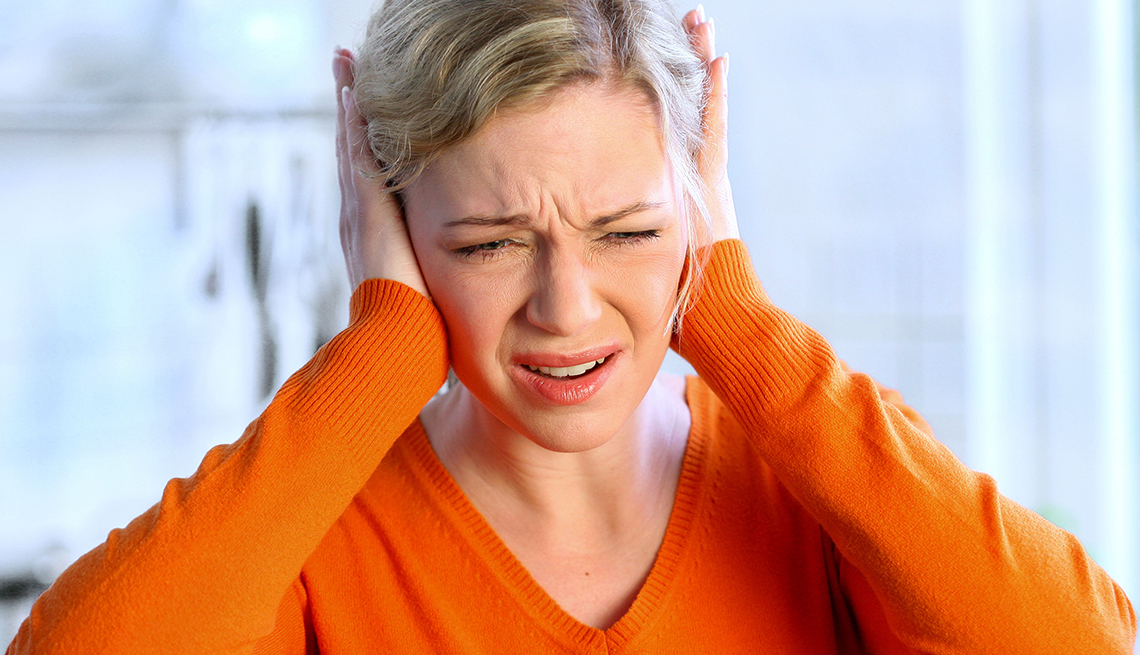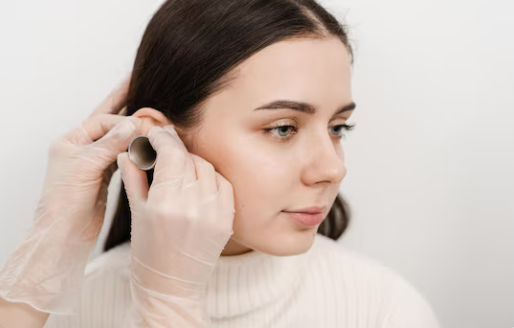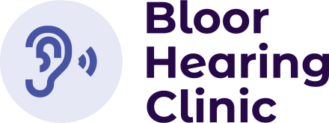
Our Blog
Your Handy Guide to Microsuction Ear Cleaning

When your ears feel off, everything feels off. It can be a dull pressure, sudden muffled sounds, or annoying ringing you can’t shake off. These symptoms often trace back to something surprisingly common: earwax buildup.
If you’ve ever had this experience, chances are you’ve looked into safe earwax removal options. Among the safest and most effective techniques available today is microsuction ear cleaning. This is a precise method used by trained professionals to remove wax and debris from the ear canal.
In this guide, we break down everything you need to know about the microsuction procedure, from how it works to what you can expect during your appointment.
Microsuction Ear Cleaning or Ear Vacuuming
While wax is a natural substance that protects your ears, too much can quickly turn into a problem, especially if it starts causing hearing loss or interfering with hearing aids.
Microsuction ear cleaning, also called ear vacuuming, is a common method for removing earwax. It uses a small, medical-grade suction device to gently remove earwax build-up, debris, and excess earwax from the outer ear and ear canal. Unlike methods that use water, microsuction is a dry procedure, making it ideal for those with narrow ear canals, a perforated eardrum, or a history of ear surgery.
Because it doesn’t involve flushing the ear, microsuction reduces the risk of infection or moisture entering the middle ear, a concern in traditional ear irrigation methods.
How Microsuction Ear Cleaning Benefits You
Microsuction is often the preferred method for removing earwax, especially in most cases where other treatments may fall short. Here’s why:
- Safe for most people, even those with hearing aids, ear tubes, or sensitive ear canals
- Minimizes the risk of discomfort, pain, or infection
- Precise and controlled wax removal, guided by direct visual inspection
- Typically painless and quick—most appointments last 15–30 minutes
- No need for ear drops beforehand in many cases
When earwax buildup is causing hearing loss, tinnitus, or dizziness, microsuction offers fast relief without irritating the eardrum.
How Microsuction Ear Cleaning Is Performed
The microsuction procedure is simple but highly effective. At Bloor Hearing Clinic, your audiologist will:
- Examine your ear canal using a medical microscope or headlamp.
- Use a gentle suction device to remove wax and other debris.
- Carefully navigate around the outer portion of the ear canal, avoiding the eardrum.
The process allows for real-time visibility, so the provider can see exactly where the impacted earwax or earwax blockage is and manually remove it without pushing it deeper.
Who Can Have Microsuction Ear Cleaning Done
Most people can safely have microsuction done, including patients with:
- excessive earwax
- narrow ear canals
- hearing aids or foreign objects in the ear
- a perforated eardrum
- a history of ear infections or ear surgery
However, there are specific considerations:
In children:
While there’s no age limit, young children may require sedation or distraction techniques. It’s also important to ensure they can remain still for the duration of the procedure.
Older adults:
Older adults may need more gentle suction due to thinner ear canal skin.
Patients with medical conditions:
Microsuction is generally safe, but individuals with certain medical conditions, such as diabetes or those taking blood thinners, may need a consultation with their doctor before undergoing the procedure.
Ear infections:
Microsuction is not recommended if you have a recent or active ear infection.
Previous surgeries:
Microsuction can be performed on individuals who have had ear surgery, but it’s important to inform your provider or audiologist about any previous procedures.
Grommets:
If you have grommets in your ears, microsuction is a suitable option
Symptoms Indicating a Need for Microsuction
You might need microsuction if you experience symptoms like hearing loss, earache, or a feeling of fullness in the ear. Difficulty hearing, especially if it’s new or worsening, can be a sign of earwax blockage.
Other symptoms that might indicate a need for microsuction include tinnitus (ringing in the ears), dizziness (lightheadedness), and itchiness or discharge from the ear. Some may experience coughing, a feeling of pressure in the ear, or a muffled sensation of hearing. Patients may also have trouble using hearing aids due to wax interference.
If the earwax is so dense that it obscures the eardrum, microsuction can help clear the debris for a better examination. In some cases, it may also be used to clear the ear canal before a routine ear exam (otoscopy) to allow for a better view of the eardrum.
If you notice any of these common signs, it’s best to schedule an appointment with your audiologist.
What Microsuction Ear Cleaning Feels Like
The procedure is generally painless, with some people finding it soothing. The main sensations reported are a light tickling or vibrating feeling in the ear canal, along with the noise of the suction. Some may experience a slight pressure or a feeling of suction, or a wind-like noise.
Microsuction can still be slightly uncomfortable in rare cases, such as if the ear canal is sensitive or inflamed. There may be a tickling feeling or brief discomfort, especially if the wax is dry or hardened.
There’s no need for anesthesia, and you can typically return to normal activities immediately after.
Microsuction Ear Cleaning Risks and Side Effects
Although microsuction is one of the safest methods of earwax removal, there are still a few potential side effects to be aware of:
- Temporary dizziness or mild ringing
- Minor irritation of the ear canal
- Rare risk of minor bleeding or infection
- Pain and discomfort
- Temporary hearing changes
- Tinnitus
Following proper aftercare advice, like avoiding cotton swabs and keeping the ear dry, can help prevent complications.
Microsuction Ear Cleaning Alternatives
If microsuction isn’t available or recommended, other earwax removal options include:
Ear Irrigation or Ear Flushing
This method involves flushing the ear canal with warm water or saline to loosen and wash out earwax. It’s not suitable for people with a perforated eardrum, ear infection, or ear surgery history. There’s also a risk of pushing wax deeper into the ear or triggering dizziness.
Ear Drops or Ear Wax Softeners
Ear drops like olive oil, mineral oil, hydrogen peroxide, or over-the-counter softeners can soften hardened earwax, making it easier to remove. Some natural oils also have antibacterial and antifungal properties, but drops alone may not clear severe earwax buildup.
Manual Ear Wax Removal
Performed by trained specialists, this involves using tools to manually remove wax. It’s often used in combination with other methods and requires skill to avoid damaging the ear canal.
Microsuction Ear Cleaning vs Ear Irrigation
Microsuction is generally considered the safer and more controlled option among common earwax removal methods, including irrigation. Here’s a quick comparison to show why:
| Feature | Microsuction | Ear Irrigation |
|---|---|---|
| Dry or Wet | Dry | Wet |
| Risk of Infection | Low | Higher |
| Suitable for Narrow Canals | Yes | No |
| Suitable for Perforated Eardrums | Yes | No |
| Accuracy | High (visual guidance) | Lower |
| Prep Needed | Minimal | May need softening drops |
| Speed | Fast | Moderate |
Microsuction offers a balance of safety, control, and effectiveness, especially in clinical settings. It’s particularly beneficial when dealing with impacted ear wax, hearing aid users, or patients with sensitive ears.
Ask Your Audiologist About Microsuction Ear Cleaning
Before undergoing any earwax removal treatment, it’s best to consult a qualified audiologist or healthcare professional. They can assess your ear canal, evaluate for impacted earwax, and recommend the right treatment based on your symptoms and medical history.
They’ll also give you tailored advice to protect your ears and prevent future wax build-up, like avoiding cotton buds and using ear drops when necessary.
Conclusion
Microsuction earwax removal offers a modern, safe, and effective way to keep your ears clear and healthy. It’s a proven method for removing earwax without discomfort or damage. If you’re dealing with earwax buildup or struggling with hearing aids, talk to your audiologist about whether the microsuction procedure is right for you. In most cases, a quick visit can get your ears cleaned and your hearing back on track, without the mess or risks of older techniques.
